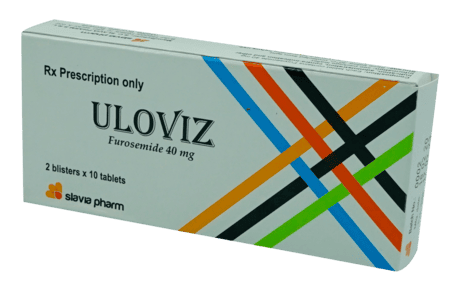This is an automatically translated article.
Diuretics are used in combination with drugs to treat edema caused by heart failure, congestive heart failure, cirrhosis, corticosteroid and estrogen therapy, especially useful in cases of edema due to renal dysfunction. Although safe, diuretics can also cause unwanted side effects.
1. Diuretics
Thiazide diuretics increase the elimination of sodium and chloride by equal amounts. The drug inhibits the reabsorption of sodium and chloride in the distal renal tubules. The drug is used in combination with other drugs for the purpose of lowering blood pressure. A few examples of Thiazide diuretics include: chlorthalidone, hydrochlorothiazide (Microzide), metolazone, indapamide Loop diuretics are the most powerful diuretics commonly used to treat heart failure. The drug increases the excretion of sodium and chloride by primarily preventing the reabsorption of sodium and chloride. The high efficacy of loop diuretics is due to the unique site of action involving the loop of Henle (part of the renal tubule) in the kidney. Examples of these drugs include: torsemide (Demodex), furosemide (Lasix). bumetanide Potassium-sparing diuretic: In the distal tubule, potassium is excreted in the urine along with sodium reabsorption. Potassium-sparing diuretics reduce sodium reabsorption in the distal tubule, thereby reducing the excretion of potassium, an important nutrient. Other diuretics cause you to lose potassium, which can lead to health problems like irregular heartbeats. Potassium-sparing diuretics when used alone are quite weak, so they are most commonly used in combination therapy with thiazides and loop diuretics. A few examples of these diuretics are: amiloride, triamterene (Dyrenium), spironolactone (Aldactone), eplerenone (Inspra). Osmotic diuretics are low molecular weight substances that are filtered out of the blood and into ducts where they are present in high concentrations. They work by preventing the reabsorption of water, sodium, and chloride. A few examples of this type of diuretic: glycerin (Glycerol), Isosorbide, Mannitol IV, Urea Carbonic anhydrase inhibitors work by increasing the excretion of sodium, potassium, carbonate, and water from the renal tubules. Some examples are: Acetazolamide Injection, Acetazolamide Tablets, Methazolamide.

Thuốc lợi tiểu quai là loại thuốc lợi tiểu mạnh nhất thường được sử dụng để điều trị suy tim
2. When to take diuretics?
Thiazide diuretics are recommended as one of the first-line diuretics for treating high blood pressure. If diuretics aren't enough to lower your blood pressure, your doctor may add other blood pressure medications to your treatment plan.
Diuretics are also used to prevent, treat, or improve symptoms in people:
Heart failure Liver failure Tissue swelling (edema) Certain kidney disorders, such as kidney stones
3. Side effects of diuretics
3.1. Why do diuretics cause so many side effects?
Different diuretics have different side effects. The types of side effects caused by diuretics depend on their mechanism of action. Some of the side effects caused by different types of diuretics are described below:
Carbonic anhydrase inhibitors:
An example of a drug in this class is acetazolamide. Some side effects include:
Hyperchloremic metabolic acidosis due to plasma bicarbonate loss Kidney stones due to increased excretion of phosphate and calcium Low potassium levels (hypokalemia) Drowsiness Neurotoxicity Allergic or excessive Loop diuretics:
Examples of drugs in this class include furosemide, ethacrynic acid, and bumetanide. Some of the side effects associated with the use of loop diuretics include:
Hypokalemic metabolic alkalosis due to loss of potassium and increased blood alkalinity Hearing damage. This damage is reversible if the drug is stopped. High blood uric acid levels leading to gout attacks Hypotension or low magnesium levels Allergic or hypersensitivity reactions Dehydration High blood calcium levels or hypercalcemia Thiazide diuretics:
One example An example of a thiazide diuretic is hydrochlorothiazide. Some of the side effects include:
Metabolic alkalosis hypokalemia Hyperuricemia or hyperuricemia, predisposition to gout Impaired tolerance to carbohydrates or glucose resulting in high blood sugar Increased lipids blood or hyperlipidemia (cholesterol and lipoproteins) Hyponatremia or low blood sodium Allergic or hypersensitivity reactions caused by the sulfonamide component of these agents. Reactions include dermatitis, skin rash, dermatitis (skin light reaction), hemolytic anemia (breakdown of red blood cells), thrombocytopenia (low platelet count), and acute pancreatitis death. Weakness and fatigue Paresthesias or numbness of limbs Impotence

Các loại thuốc lợi tiểu khác nhau có những tác dụng phụ khác nhau
Potassium-sparing diuretics:
These drugs can be divided into two groups, including aldosterone antagonists such as apironolactone and sodium channel blockers such as triampterene and amiloride. Some of the side effects include:
Hyperkalemia or increased blood potassium levels Hyperchloremic metabolic acidosis Gynecomastia or breast enlargement in men Erectile dysfunction Benign prostatic hyperplasia Acute kidney failure Kidney stones Osmotic diuretics:
Examples of these agents include isosorbide and mannitol. Some of the side effects include:
Extracellular volume expansion. This can be a serious problem in people with heart failure or pulmonary edema. Headache Nausea and vomiting Dehydration and free water loss Hypernatremia or increased sodium concentration Diuretics are generally safe. However, some possible side effects are described in detail below.
3.2. Main side effects of diuretics
Increased urination and sodium loss Diuretics can also affect blood potassium levels. If you take a thiazide diuretic, your potassium levels may drop too low (hypokalemia), which can cause life-threatening problems because your heart beats too fast. If you are using potassium-sparing diuretics, you may have too much potassium in your blood Headache Dizziness Thirst Increased blood sugar Decreased sex drive Runny or stuffy nose Sore throat Dry cough Muscle cramps corn Increased cholesterol Skin rash Gout exacerbation Diarrhea 3.3. Serious Side Effects
Fainting Excessively low sodium levels caused by thiazide diuretics are associated with death and neurological damage in the elderly. Kidney failure Allergies Irregular heartbeat If you have any of the above signs and symptoms tell your doctor right away or go to the nearest medical facility.

Tác dụng phụ nghiêm trọng của thuốc lợi tiểu có thể gây ngất xỉu
4. Drug interactions
Thiazide diuretics taken with diabetes medications (such as oral and insulin medications Apidra, Exubera, Humulin 70-30, Humalog Mix 50-50, Humalog 75-25, Humulin R, Humulin N, Humulin 50-50, Velosulin , Humalog , Lantus , Levemir , Novolog , Novolog Mix 50/50, Novolog Mix 70/30) reduce the effects of the aforementioned antidiabetic drugs, so an increased dose of diabetes treatment may be necessary. Among patients receiving Digoxin, low potassium levels due to concomitant administration of digoxin and diuretics (thiazides and loop diuretics) can cause weakness, cramps, and irregular heartbeat. Lithium (a drug used to treat bipolar disorder) when taken with diuretics (thiazides and loop diuretics) can cause thiazide toxicity due to decreased renal excretion of lithium. Lithium levels need to be monitored for safety. Potassium-sparing diuretics taken with ACE inhibitors or nonsteroidal anti-inflammatory drugs (NSAIDs) eg indomethacin (Indocin) have been associated with severe increases in blood potassium levels. Severe hyperkalemia may manifest as muscle weakness, fatigue, and bradycardia (bradycardia). It is important to monitor potassium levels in the blood and perform an electrocardiogram to check. Diuretics are often prescribed along with other medications for high blood pressure and heart disease. This may increase the effects of these drugs, potentially causing electrolyte abnormalities (such as decreased potassium levels).
In short, any medicine from supplements to drugs to treat disease or treat symptoms has their side effects. When your doctor prescribes you, inform them of all the medicines you are taking, any health problems. Your doctor will weigh the pros and cons and drug interactions before giving you any diuretics. At the same time, they will also provide you with possible side effects. Your task is to adhere to the treatment, listen to the doctor's instructions and monitor the side effects when taking the drug, eat and rest in moderation, immediately notify the doctor when you notice any signs or symptoms. symptoms of unwanted side effects.
Please dial HOTLINE for more information or register for an appointment HERE. Download MyVinmec app to make appointments faster and to manage your bookings easily.
References: healthline.com, mayoclinic.org, rxlist.com













